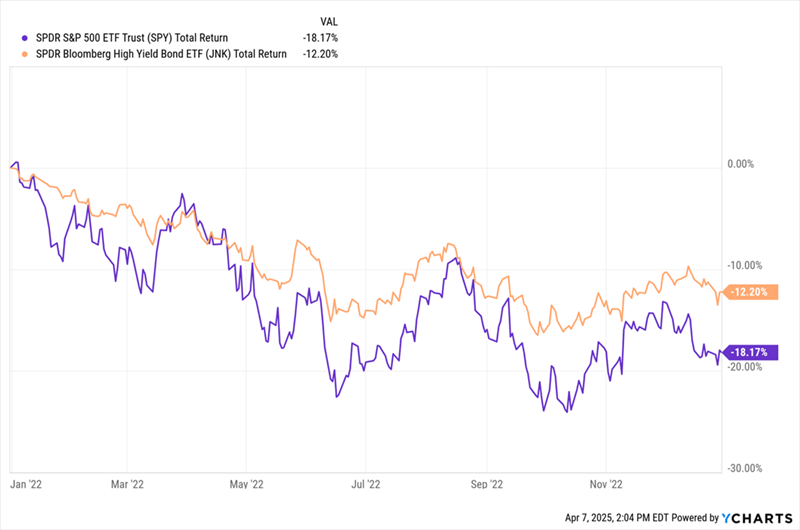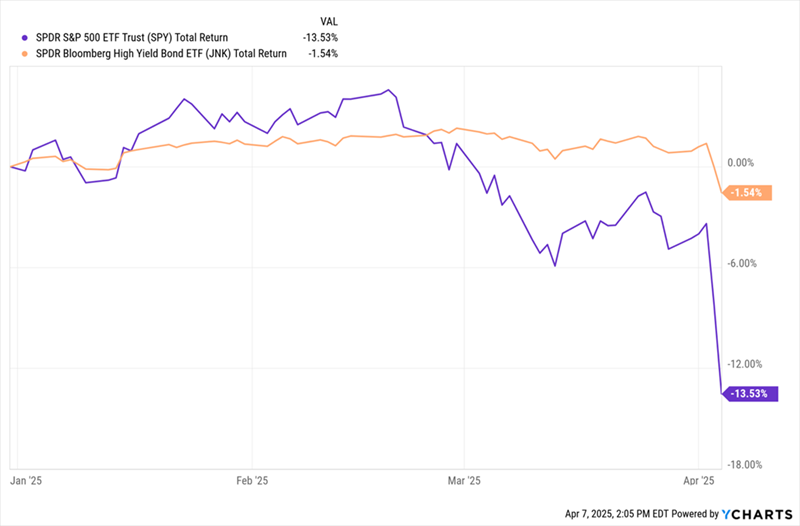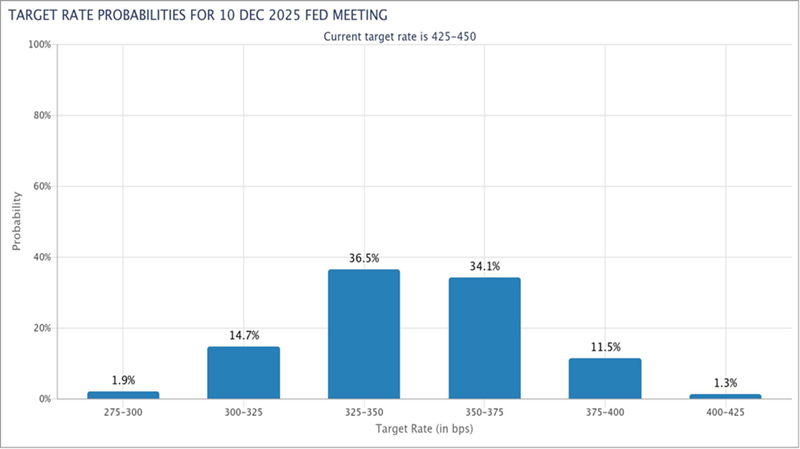The pullback we saw at the beginning of this week calls to mind the last big selloff we saw—in 2022.
That’s what I want to draw your attention to today (but only for a moment!). Because the 2022 experience still has a lot to tell us about how markets really view the possibility of a recession. Along with that, a quick look back can also help us develop our strategy for investing in 8%+ yielding closed-end funds (CEFs) from here.
Back then, the fear was that a combination of inflation and recession would cause stocks to plunge. And plunge they did. In fact, the market gave up on everything.
Stocks, Bonds? They All Suffered the Same Fate in ’22

All in all, the S&P 500—shown above by the performance of the SPDR S&P 500 ETF Trust (SPY), in blue—surrendered nearly 20% of its value on a total-return basis. But notice, too, the SPDR Bloomberg High Yield Bond ETF (NYSE:JNK), the junk-bond index fund that tracks bonds issued by riskier companies (in orange). It, too, took a hit as worries of a recession literally hit 100%.
Now let’s compare that chart to what we’ve seen so far this year, up until just before yesterday’s action:
High-Yield Credit Treads Water While Stocks Sink

Not only are the declines worse at this point in 2025 than in 2022 for stocks, but the high-yield corporate debt is down just slightly down. That isn’t just strange, it’s historically unprecedented.
Long-time readers know why this is happening, since we’ve been discussing this for a long time in my CEF Insider service. There, I’ve been recommending high-yield bond CEFs because they’re better positioned than stocks to handle this macro volatility in the long haul. Yields are currently very high, corporate defaults are very low, and therefore, so-called “junk” bonds are a great place to get a big income stream now.
But this also tells us something important: The markets don’t really believe a recession is coming—at least, not yet.
In a recession, companies pull back on spending and struggle to pay their bills, causing ETFs like JNK to drop. So it made sense for investors to sell off that fund in 2022.
Before we go further, I should touch on a topic I have avoided so far: interest rates. Fed Chair Jerome Powell has made it clear that he will not cut interest rates faster this year, despite the market’s tariff-driven selloff. As of this writing, investors are taking him at his word, believing we’ll have three or four rate cuts by the end of the year:

Source: CME Group (NASDAQ:CME)
So, if stocks won’t get a break from faster interest-rate cuts, and the bond market isn’t pricing in massive rate cuts, the market expectation is that we will see higher inflation from the tariffs and lower growth from their economic drag. You can disagree with this view, but it’s the reason why stocks have been falling.
Will this view continue to dominate Wall Street? That will depend on what ultimately happens around the tariffs. If they are lowered further, investors will likely change their attitude and push stocks higher.
But until then, expect volatility to stay high and expect bonds to remain a refuge (although, as we’ve seen in the last few days, even that has started to wane a bit, as well).
Fortunately, this situation will not last forever. Stocks will ultimately recover their losses from this last week.
That makes now a good time to start to look at buying into heavily discounted CEFs, which have seen their dividend yields jump in this selloff. But I recommend adding to positions slowly, as more volatility could cause CEFs to dip in the short term before they fully recover in the long run.
Disclosure: Brett Owens and Michael Foster are contrarian income investors who look for undervalued stocks/funds across the U.S. markets. Click here to learn how to profit from their strategies in the latest report, "7 Great Dividend Growth Stocks for a Secure Retirement."
